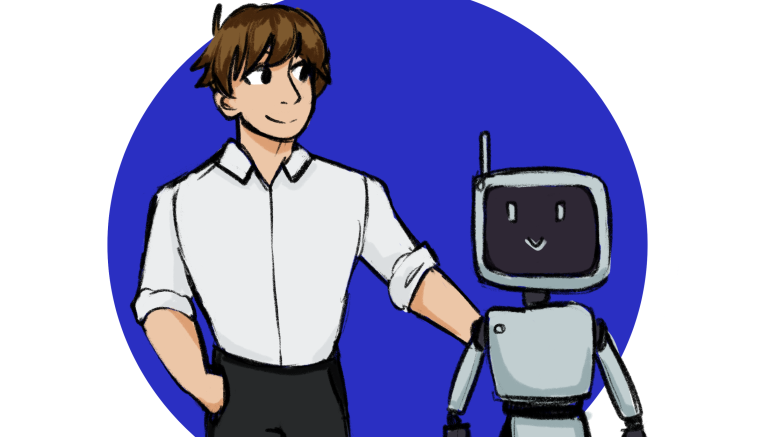Artificial intelligence (AI) research is no longer limited to theory. Now, it’s about how systems function in real-world settings and collaborate with people. At the U of M, computer science professor John Anderson has dedicated his career to studying interactions between humans and intelligent systems.
“We’re mostly about making computer systems do things decently […] that would normally be required as having intelligence, as if people were doing them. It’s not a direct comparison to people, it’s things that are normally associated with people or becoming more people-like,” Anderson said.
Anderson’s early work explored expert systems in health care. Today, he runs a robot co-operation lab. His lab focuses on how robot teams can support disaster response in environments too dangerous for humans. In scenarios like collapsed buildings, where sending people could be fatal, the lab’s work explores how co-operative robots can navigate unstable structures, maintain communication and preserve overall mission effectiveness, even as individual members are lost or replaced.
“We work with situations where you’re dealing with teams, and where some of the team might be lost or destroyed at any moment,” he included.
According to Anderson, teamwork raises practical challenges, such as ensuring members share common reference points so warnings are understood, maintaining backup for rare skills to prevent disruption if one unit fails and developing strategies for responding when a member declines a risky task. Anderson’s lab studies these issues and builds methods to keep work going when conditions change.
He also shared his observations on how AI quietly operates in everyday life. For instance, credit card fraud-detection systems run in the background each time people tap to pay or shop online. “Ideally, AI should work as transparently as regular intelligence does,” he said. The goal is to ensure useful help that does not get in the way and still flags trouble when needed.
Some risks are growing as AI technology develops. Off-the-shelf tools can imitate a person’s voice or face if enough public media exist. That raises concerns about scams and trust online. Anderson’s view on AI is straightforward — be aware, because “other people can use it too, and not all people are good.”
Anderson also pointed to equity. New tools are not evenly spread. “The future is already here. It’s just not very evenly distributed,” he said, quoting American-Canadian writer William Gibson. For Anderson, a better spread of the benefits, like remote medical expertise, is part of the promise.
When asked about his hopes for what his work will achieve, he kept it simple. “I hope that I’ve managed to advance some principles, make things a little bit better and leave stepping stones that other people can use to climb higher,” he said. Science moves when people add small pieces others can build on.
For students, he offered steady advice. “Trust that what you’re interested in is there for a reason and that you can help move that forward,” he said. Progress is personal and incremental. “The only thing you have to improve upon is your own previous work […] Recognize that no matter what other people do, what matters is that you’re a little bit better than you were yesterday and you will be a little bit better tomorrow than you were the day before. Whether other people are ahead of you or behind you doesn’t matter as much.”


